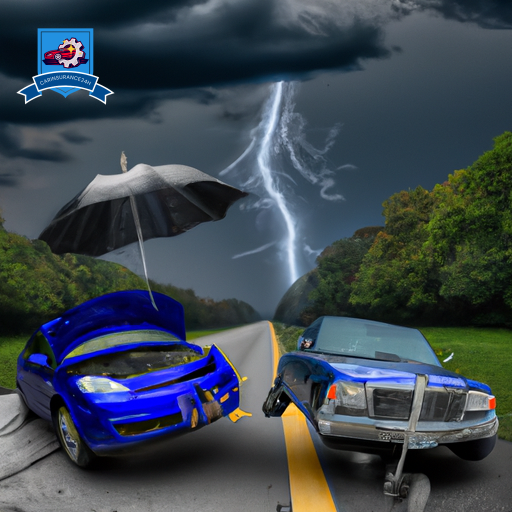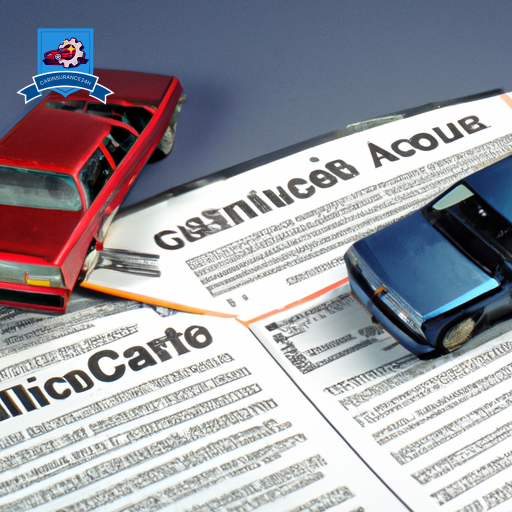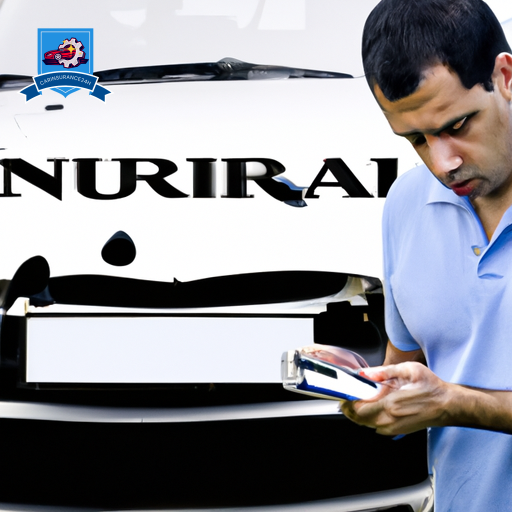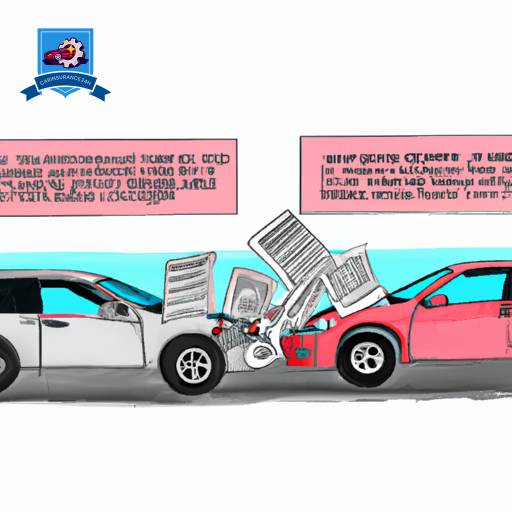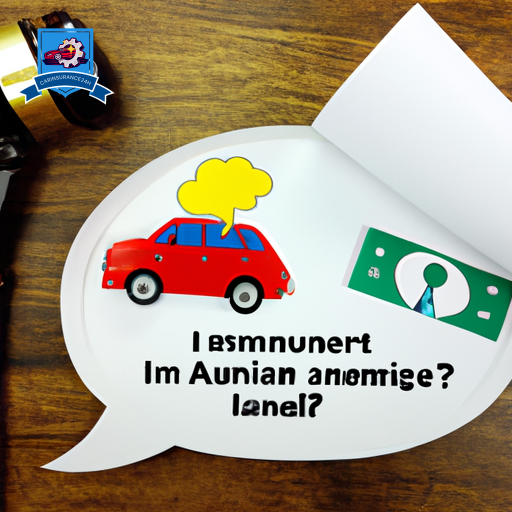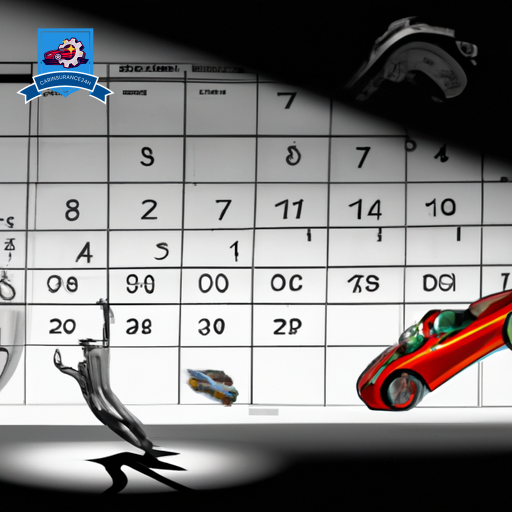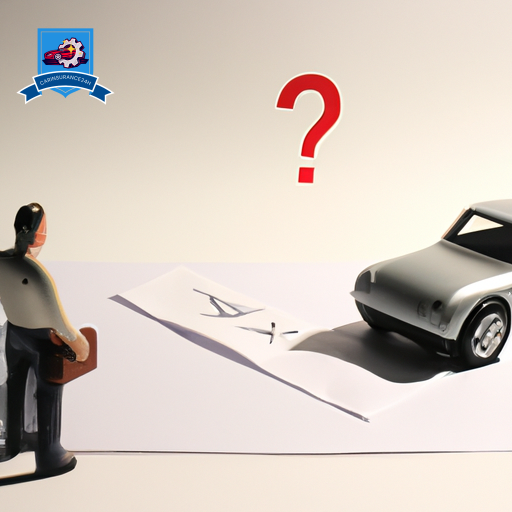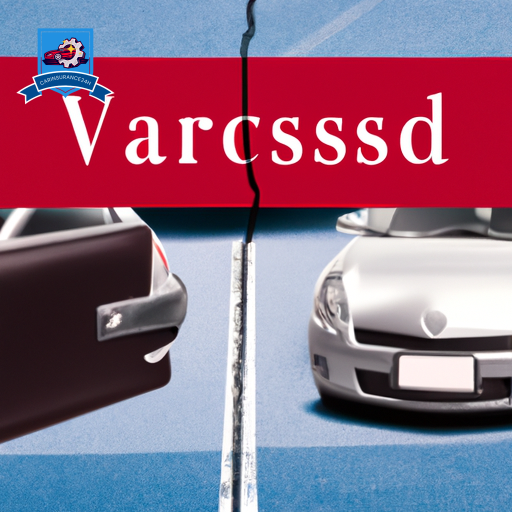Exploring the complexities of auto insurance can be challenging, particularly when considering the nuances of underinsured motorist coverage. This type of insurance protects you when involved in an accident with a driver whose insurance limits are insufficient to cover the damages incurred.
The decision to include underinsured motorist coverage in your policy hinges on understanding the potential financial implications of an accident, the legal requirements varying by state, and the balance between cost and benefit. As we explore the critical aspects of underinsured motorist coverage, one must ponder: Is the security it offers worth the investment?
This question invites a deeper exploration into the mechanics and merits of this coverage option.
Understanding Underinsured Coverage

Underinsured motorist coverage steps in to bridge the gap when the at-fault driver’s insurance falls short of covering your total expenses resulting from an accident. This type of coverage is an essential aspect of a thorough auto insurance policy, designed to protect you from financial strain in the event that the other party’s liability limits are not sufficient to cover your medical bills, lost wages, and other related damages.
Coverage types under underinsured motorist insurance can be broadly categorized into two: bodily injury and property damage. Bodily injury coverage pays for medical expenses, pain and suffering, and lost wages for you and your passengers. On the other hand, property damage coverage helps to repair or replace your vehicle and other personal property damaged in the accident. It’s vital to understand that while both coverage types serve as a financial safety net, they are subject to the limits set forth in your policy.
Policy exclusions are another critical aspect of underinsured motorist coverage. These exclusions define situations where the coverage does not apply. Common exclusions may include accidents involving a vehicle owned by the policyholder that is not listed on the policy, intentional damage caused by the policyholder or authorized drivers, and incidents occurring during the use of the insured vehicle for commercial purposes. Understanding these exclusions is vital to avoid surprises at the time of a claim.
The Importance of Coverage Limits

Selecting the appropriate coverage limits for underinsured motorist coverage is a critical decision that directly impacts your financial security in the event of an accident with an underinsured driver.
It necessitates a careful assessment of your personal risk exposure and a comparison of policy limits available in the market.
Understanding these aspects guarantees that you are adequately protected without overpaying for coverage you may not need.
Assessing Your Risk
Evaluating your potential risk is a critical step in determining the appropriate coverage limits for your insurance policy. Factors such as your driving habits and geographic location greatly influence this assessment.
For instance, if you frequently drive in areas with high traffic volumes or in regions known for a high number of underinsured drivers, your risk of encountering an underinsured motorist accident increases. Similarly, long commutes or regular travel on highways can elevate your exposure to potential accidents, highlighting the need for adequate coverage.
Understanding these risk elements allows you to tailor your underinsured motorist coverage to make sure it meets your specific needs, providing peace of mind and financial protection in the event of an accident with an underinsured driver.
Comparing Policy Limits
Having assessed your potential risk and the need for underinsured motorist coverage, it becomes imperative to understand the significance of choosing the right coverage limits for your policy. The policy definitions and claim statistics guide this decision, offering a structured approach to selecting limits that align with your individual risk profile and financial security.
| Coverage Limit | Policy Definitions | Claim Statistics |
|---|---|---|
| $25,000 | Minimum Required | Low Compensation |
| $50,000 | Moderate Protection | Average Claims |
| $100,000 | Enhanced Security | High Frequency |
| $250,000 | Thorough Cover | Severe Incidents |
| $500,000+ | Maximum Assurance | Exceptional Cases |
This table illustrates the relationship between coverage limits, policy definitions, and claim statistics, helping policyholders make informed decisions that balance risk management with financial practicality.
Common Scenarios for Use

Underinsured motorist coverage becomes particularly valuable in several key scenarios where the at-fault party’s insurance is insufficient to cover damages. This type of coverage is vital for protecting oneself against the financial strain that can result from accidents with underinsured drivers. It is important to be aware of coverage exclusions and to review your policy during renewals to make sure that your coverage adapts to your changing needs and circumstances.
-
Severe Accidents with High Medical Costs: In instances where you or your passengers sustain significant injuries requiring extensive medical treatment, the at-fault driver’s insurance may not cover all the medical expenses. Underinsured motorist coverage can provide the additional coverage needed to avoid out-of-pocket expenses.
-
Total Vehicle Loss: If your vehicle is totaled in an accident and the at-fault driver’s insurance cannot cover the total value of your vehicle, underinsured motorist coverage can help bridge the gap, providing you with the funds necessary to replace your vehicle without financial hardship.
-
Lost Wages and Long-term Rehabilitation: In the unfortunate event that injuries from an accident prevent you or your passengers from working, underinsured motorist coverage can step in to cover lost wages. Additionally, if long-term rehabilitation or therapy is needed, this coverage can help make sure that these expenses are met without draining your savings.
Understanding these scenarios underscores the importance of underinsured motorist coverage. It acts as a financial safety net, offering peace of mind and protection against the uncertainties that come with sharing the road.
Comparing Costs and Benefits

When considering the adoption of underinsured motorist coverage, it is pivotal to meticulously weigh the potential financial benefits against the associated costs. This evaluation not only involves crunching numbers but also requires a deep understanding of policy specifics, such as policy exclusions and deductible amounts, which can substantially impact the overall value and protection offered by the coverage.
One way to approach this comparison is by directly juxtaposing the costs involved in acquiring this coverage against the benefits it provides in various scenarios. The following table offers a simplified overview:
| Factor | Costs | Benefits |
|---|---|---|
| Premiums | Annual or monthly payment rates | Financial protection in underinsured incidents |
| Deductible Amounts | Out-of-pocket before coverage | Reduced financial burden after accidents |
| Policy Exclusions | Limits on coverage scenarios | Clarity on coverage scope and limitations |
It’s important to note that while the costs are often immediate and quantifiable, such as premiums and deductible amounts, the benefits, though potentially much greater, are contingent upon the occurrence of specific events, like accidents involving underinsured motorists. Additionally, understanding policy exclusions is essential, as these can have a significant impact on the applicability and effectiveness of the coverage in real-world scenarios.
Legal Requirements by State

After exploring the financial implications of underinsured motorist coverage, it is important to examine the legal requirements mandated by various states regarding this type of insurance. The landscape of these requirements is a patchwork, influenced by state-specific legislation that aims to protect drivers in different ways. Understanding these legalities is vital for drivers to guarantee compliance and safeguard their financial well-being.
Underinsured motorist coverage mandates vary greatly from state to state. While some states require all drivers to carry this type of coverage, others offer it as an optional addition to a standard auto insurance policy. The distinction between mandatory and optional can have a notable impact on a driver’s decision-making process and financial planning. Moreover, state exceptions play a critical role in these mandates, providing unique circumstances under which the requirements may differ.
To evoke emotion and underscore the importance of understanding these legal requirements, consider the following:
- The relief of knowing you’re protected in states where underinsured motorist coverage is mandated, offering peace of mind in the face of unpredictable accidents.
- The frustration of navigating state exceptions, which can complicate the process of ensuring you have adequate coverage.
- The empowerment in making informed choices in states where the coverage is optional, highlighting the importance of being proactive about your insurance needs.
How Claims Process Works

Managing the claims process for underinsured motorist coverage can often seem challenging, but understanding each step is important for effectively handling the aftermath of an accident involving an underinsured driver.
The initial phase involves promptly notifying your insurance company about the accident. This is a critical step as it sets the foundation for your claim. It’s imperative to provide a detailed account of the incident, supported by any available evidence such as police reports, photographs of the scene, and witness statements. This collection of claim documentation is crucial for substantiating your position and the extent of your damages or injuries.
Following the report, an investigation by your insurance company will take place. They will review all submitted materials and may request additional information. This is where having thorough claim documentation becomes invaluable. It’s also a juncture where negotiation skills may begin to play a role. If the assessment by your insurance company deems the other party as underinsured and liable, they will calculate the compensation amount. However, the initial offer may not always align with your expectations or the actual expenses incurred.
This is where negotiation tips come into play. It’s beneficial to be prepared with a detailed breakdown of your expenses and losses, highlighting any discrepancies between your calculations and the insurance company’s offer. Effective communication and negotiation can lead to a more satisfactory settlement. Remember, the goal of underinsured motorist coverage is to protect you from financial strain after an accident with a driver whose coverage is insufficient, and understanding the claims process empowers you to navigate it more confidently.
Coverage Impact on Premiums

One often wonders how adding underinsured motorist coverage affects their insurance premiums. The answer lies in the complex process of premium calculation, which insurers undertake to evaluate risk and determine rates. Adding this coverage typically results in an increase in your premium, but the extent of this increase can vary widely depending on several factors, including your location, driving history, and the coverage limits you choose.
Premium calculation is a meticulous process that takes into account the likelihood of a policyholder filing a claim. Underinsured motorist coverage adds another layer of protection, which, while increasing your premium, also enhances your financial safety net in the event of an accident with an underinsured driver. Insurers assess the potential risk associated with providing this additional coverage and adjust premiums accordingly.
While the thought of increased premiums may initially be off-putting, consider the following:
- Peace of mind knowing you’re protected against the unforeseen
- Financial security in the face of potentially devastating losses
- The potential for discount eligibility that can offset the cost increase
Discount eligibility should not be overlooked when evaluating the impact of adding underinsured motorist coverage on your premiums. Many insurance companies offer discounts for various reasons, such as multiple policies, safe driving records, or security features on your vehicle. These discounts can greatly reduce your overall premium, making the addition of underinsured motorist coverage more financially manageable.
Real-Life Case Studies
Understanding the impact of underinsured motorist coverage on premiums sets the stage for exploring real-life case studies that highlight the significance of this protection. These narratives not only shed light on the practical benefits of such coverage but also dispel common coverage misconceptions and underscore the importance of understanding policy exclusions.
In one case, a family was involved in a severe car accident caused by a driver with minimal liability insurance. Despite the family’s extensive medical bills and the long-term rehabilitation required, the at-fault driver’s insurance was quickly exhausted. Thankfully, the family had underinsured motorist coverage, which stepped in to cover the remaining costs. This case illustrates the critical financial safety net that underinsured motorist coverage provides, particularly in serious incidents where the costs far exceed typical minimum liability limits.
Another case involved a single individual who suffered significant injuries in a hit-and-run incident. Initially, the victim believed they had no recourse due to the driver fleeing the scene. However, their underinsured motorist coverage applied to hit-and-run scenarios, a fact that contradicted the victim’s misconceptions about their policy’s scope. This coverage enabled them to receive necessary medical treatment and rehabilitation without incurring crippling debt.
These case studies exemplify the important role that underinsured motorist coverage can play in protecting individuals and families from the financial devastation that can follow a serious accident. They also highlight the significance of thoroughly understanding one’s insurance policy, including any exclusions and the real-world applications of coverage, to ensure adequate protection on the road.
Making the Right Decision
Having considered various real-life case studies, we now turn our attention to the important task of making an informed decision regarding underinsured motorist coverage.
This discussion will encompass a thorough explanation of the benefits this coverage offers, alongside an assessment of the risk factors pertinent to individual circumstances.
Our objective is to equip readers with the knowledge needed to evaluate their own needs accurately and make a decision that guarantees the best protection.
Coverage Benefits Explained
Evaluating the benefits of underinsured motorist coverage is crucial when making an informed decision about your auto insurance needs. This coverage is vital in safeguarding against the financial turmoil that can result from accidents with underinsured drivers. Understanding the coverage types and being aware of policy exclusions will guide you in tailoring your insurance policy to your specific situation.
- Peace of Mind: Knowing you’re protected, regardless of the other driver’s coverage adequacy.
- Financial Security: Covers medical expenses, lost wages, and other damages that exceed the at-fault driver’s insurance limits.
- Flexibility: Offers coverage in diverse scenarios, including hit-and-run accidents.
Incorporating underinsured motorist coverage into your auto insurance portfolio ensures that you’re prepared for the unpredictable, providing both emotional and financial reassurance.
Risk Assessment Factors
When considering underinsured motorist coverage, evaluating your risk of encountering an underinsured driver is a critical step in making an educated insurance decision.
Two primary factors to thoroughly analyze are driver behavior and location risks. Driver behavior encompasses the general habits and safety practices of drivers within your region. Areas with higher instances of reckless or negligent driving can greatly increase the likelihood of being involved in an accident with an underinsured motorist.
Location risks pertain to the statistical likelihood of accidents and the average insurance coverage levels in your area. Regions with lower average income levels or higher rates of uninsured drivers can elevate the risk of encountering an underinsured motorist, making underinsured motorist coverage a potentially prudent investment for your vehicle insurance portfolio.
Frequently Asked Questions
Can Underinsured Motorist Coverage Be Applied to Damage to Personal Property, Such as a Bicycle or Mobile Home?
Underinsured motorist coverage serves as a safety net for property valuation, including damage to personal property like bicycles or mobile homes, within the coverage limits. This safeguard guarantees compensation beyond the at-fault party’s insurance capacity.
How Does Underinsured Motorist Coverage Interact With Health Insurance Policies or Personal Injury Protection (Pip) Coverage?
Underinsured motorist coverage complements health insurance policies and personal injury protection (PIP) by covering expenses exceeding policy limits, subject to coverage exceptions. This guarantees thorough financial protection against injuries from underinsured at-fault drivers.
Is It Possible to Purchase Underinsured Motorist Coverage After an Accident Has Occurred, and if So, How Does That Process Work?
Purchasing underinsured motorist coverage post-accident is typically not feasible due to the absence of coverage retroactivity. Policy amendments generally cannot retroactively address prior incidents, emphasizing the importance of proactive insurance planning and coverage evaluation.
Are There Specific Time Limits or Deadlines for Filing a Claim Under Underinsured Motorist Coverage?
There are specific time limits and deadlines for filing a claim under underinsured motorist coverage. Adhering to these filing procedures is crucial to make certain the claim is processed efficiently and within the legal timeframe.
How Does Underinsured Motorist Coverage Vary When Traveling Out of State or Internationally?
Underinsured motorist coverage can differ greatly across borders, influenced by state laws and international regulations. It’s important to understand these variations to guarantee sufficient protection when traveling out of state or internationally.

